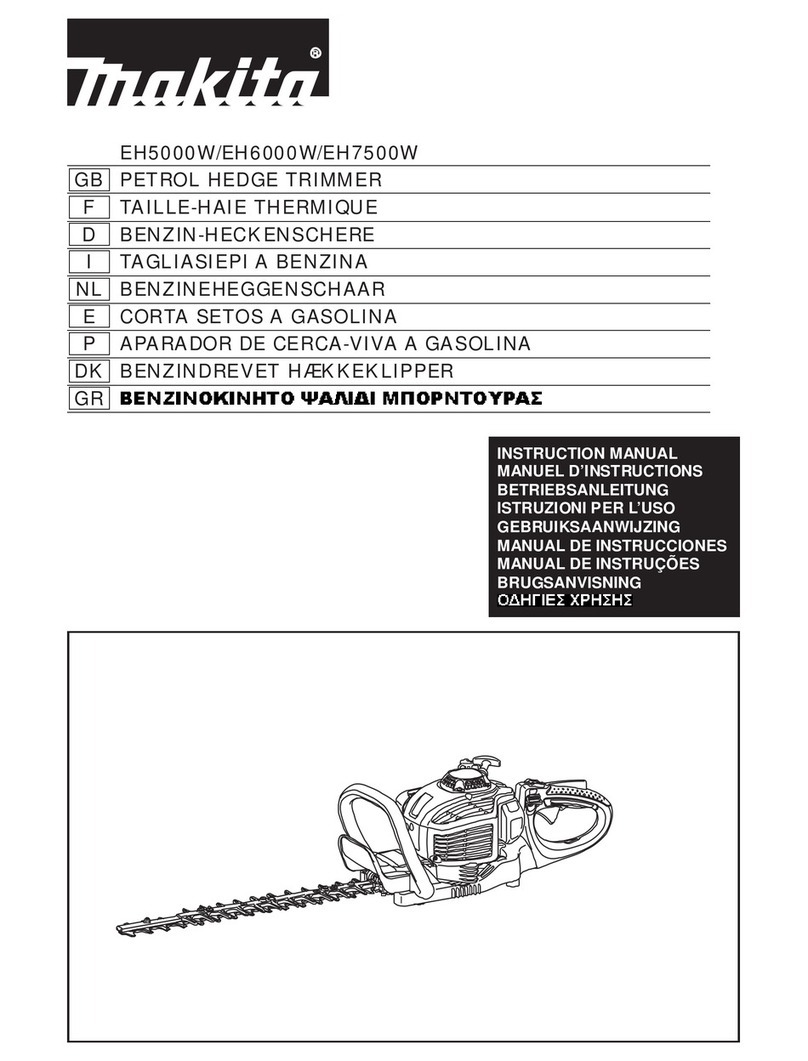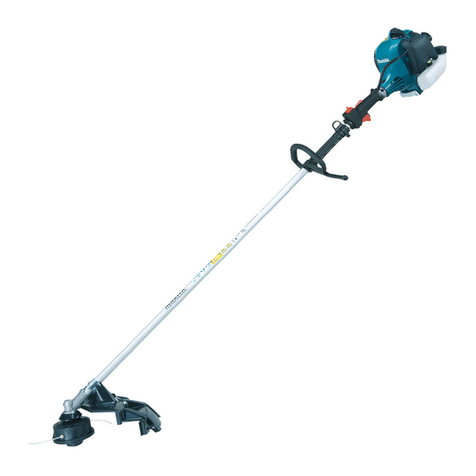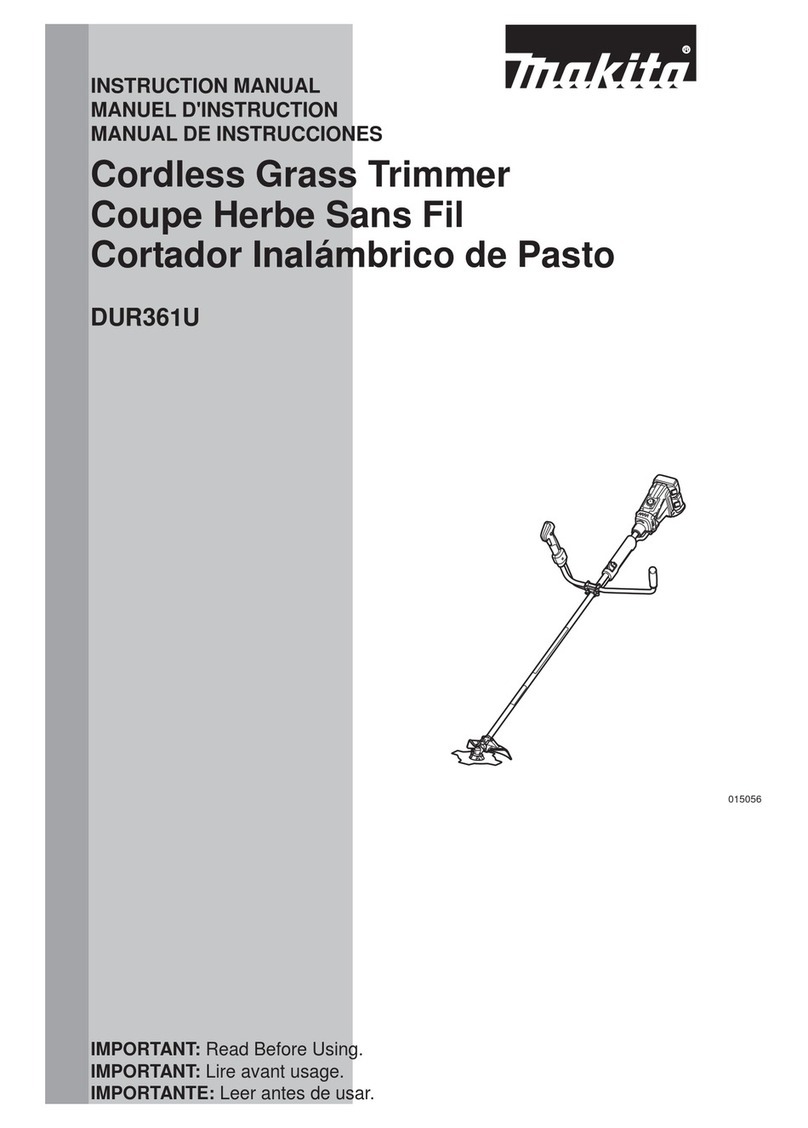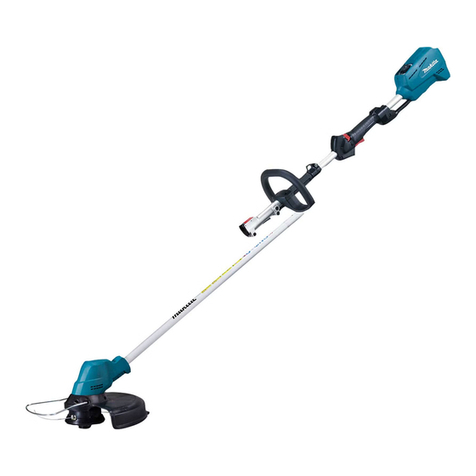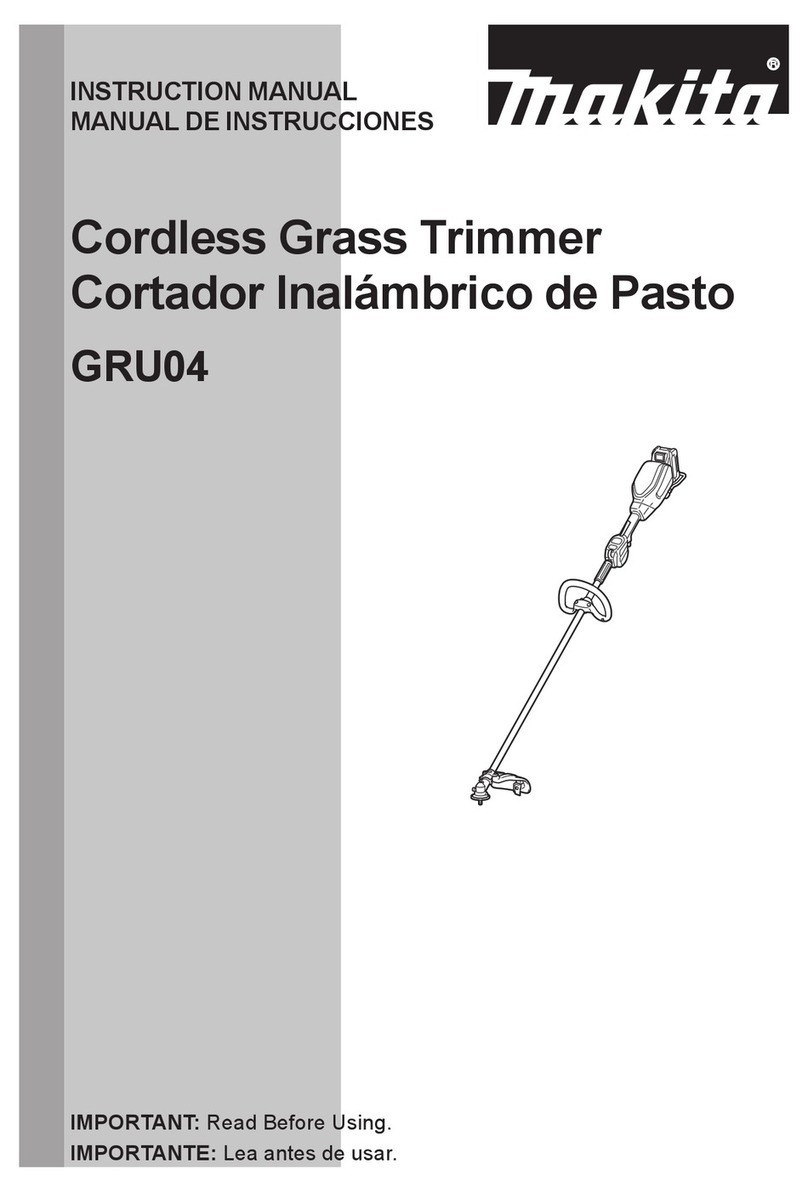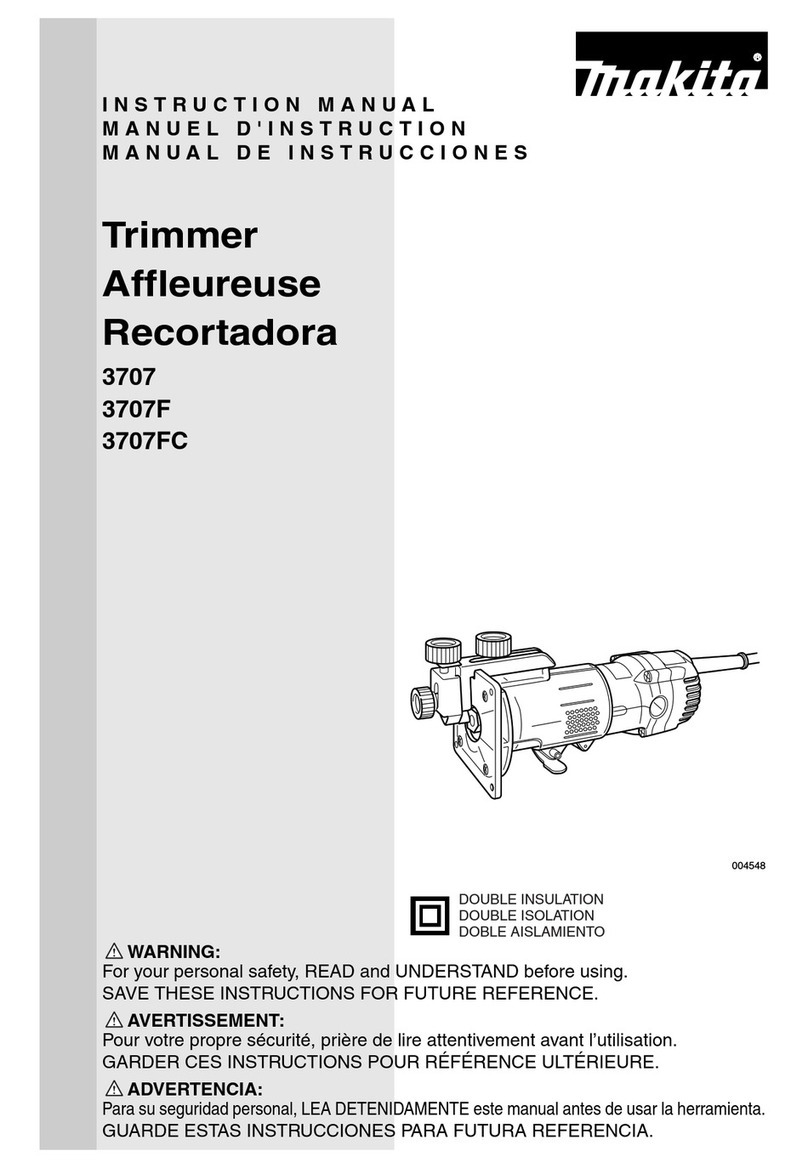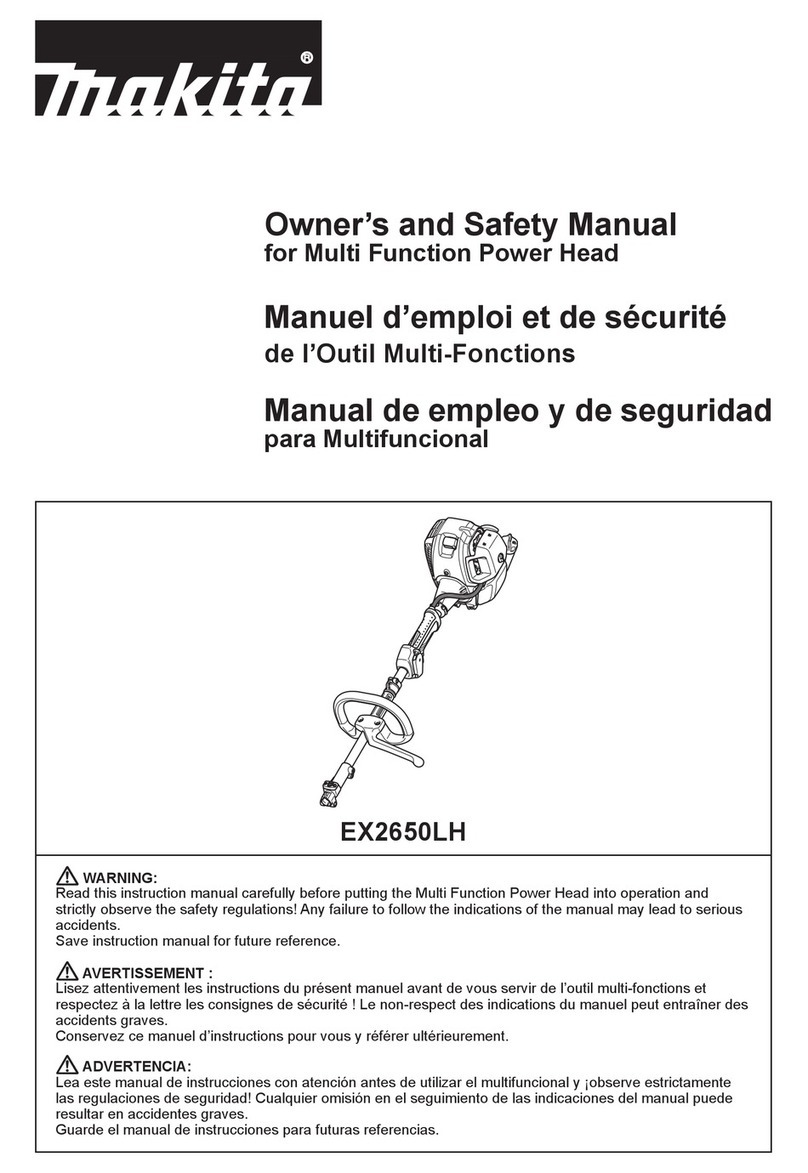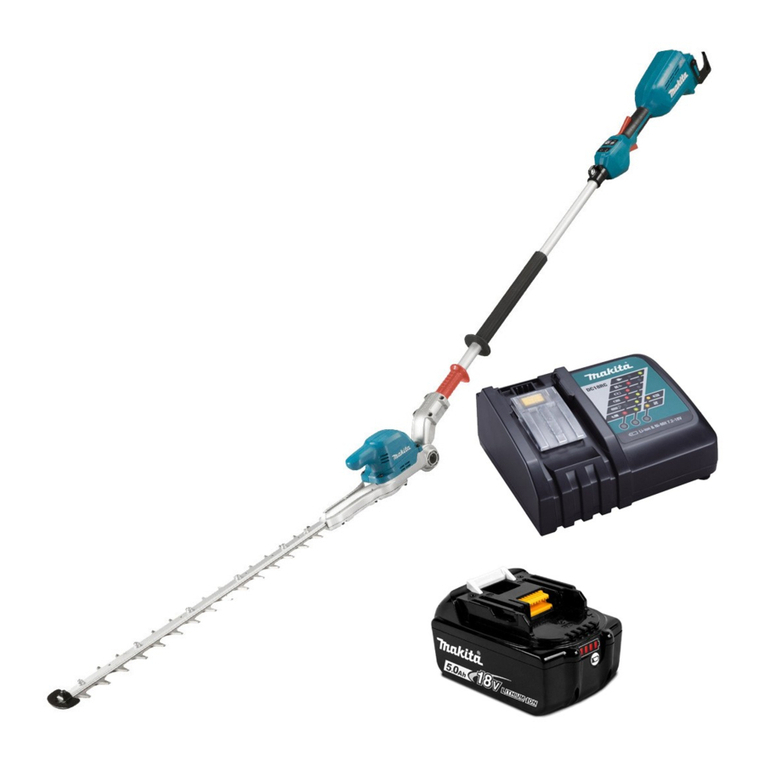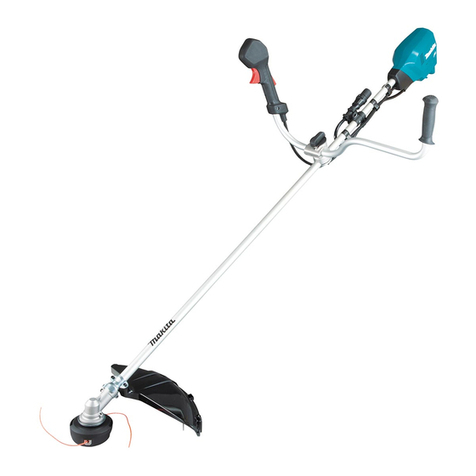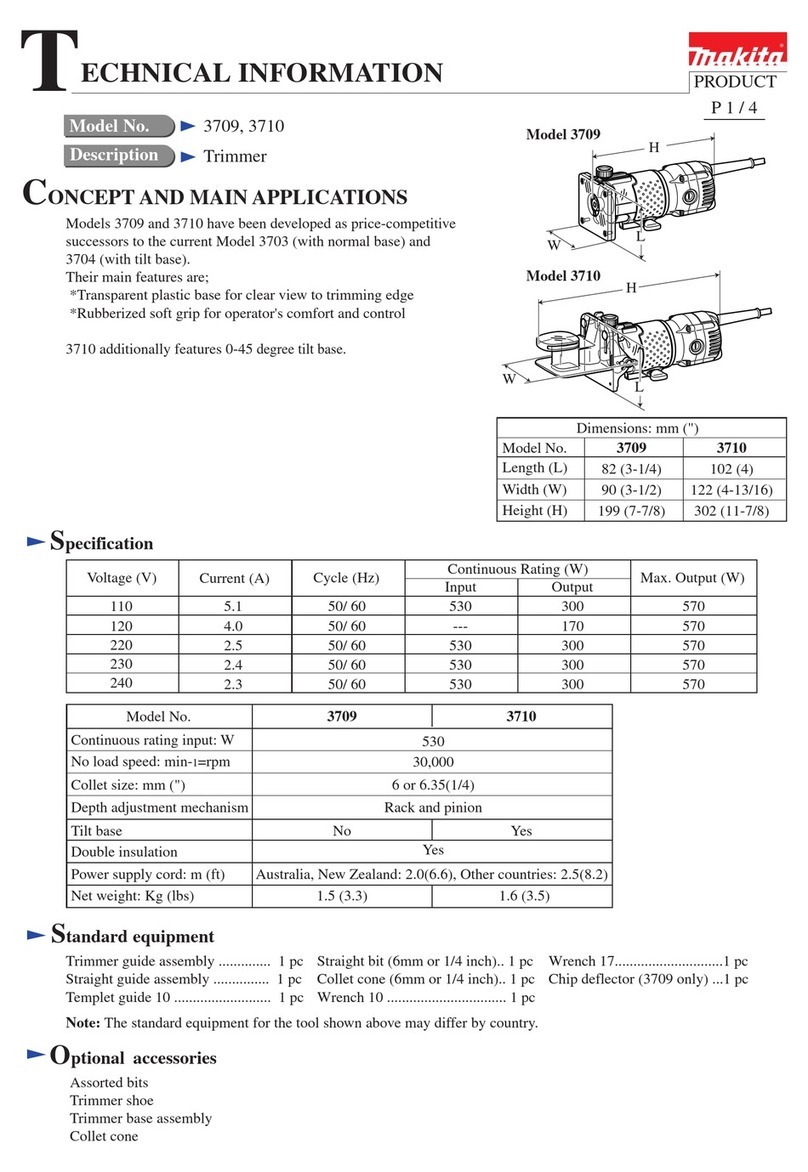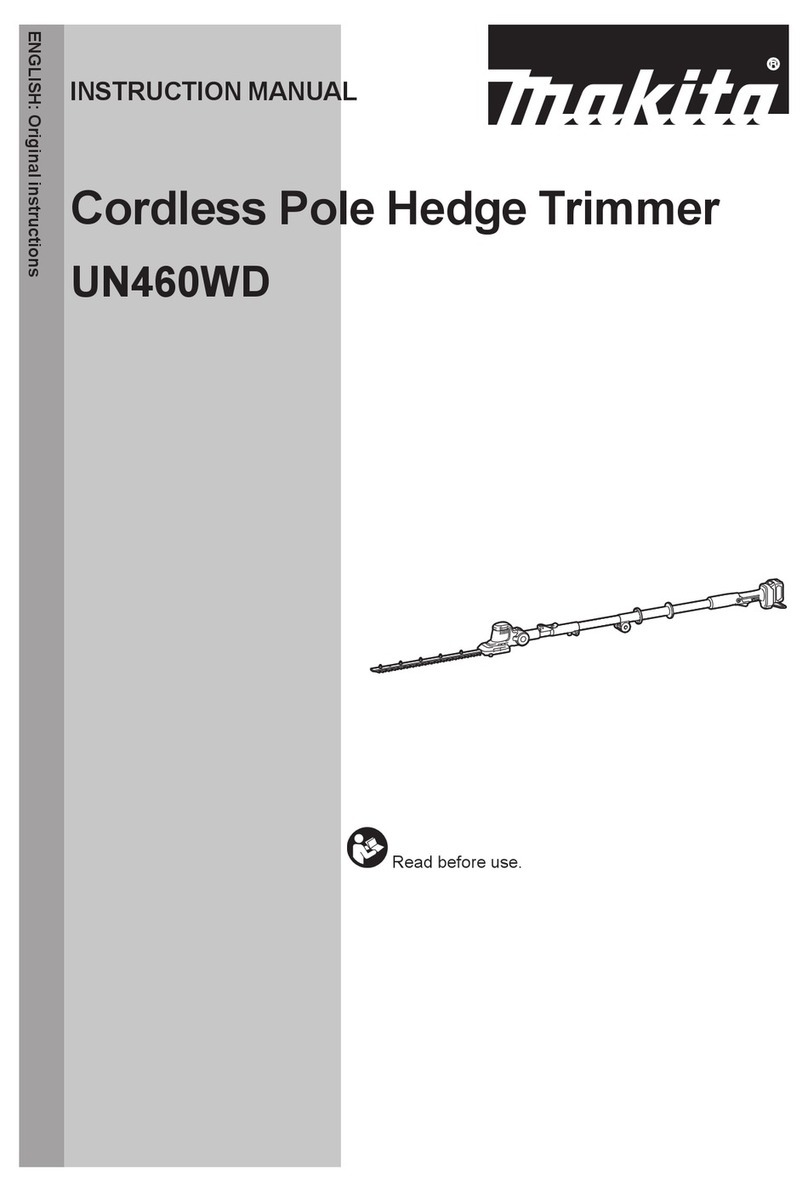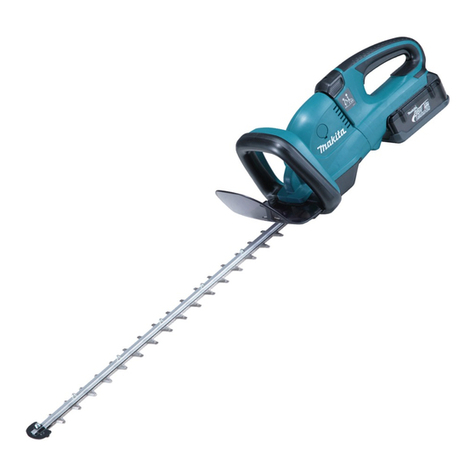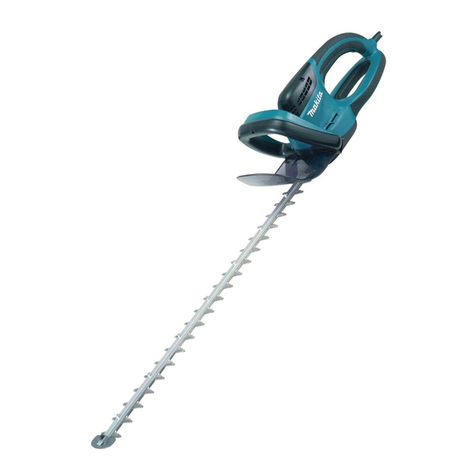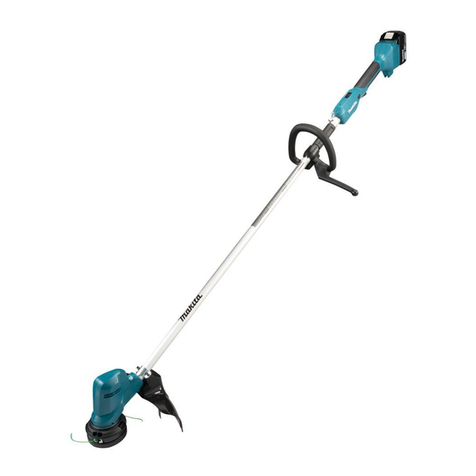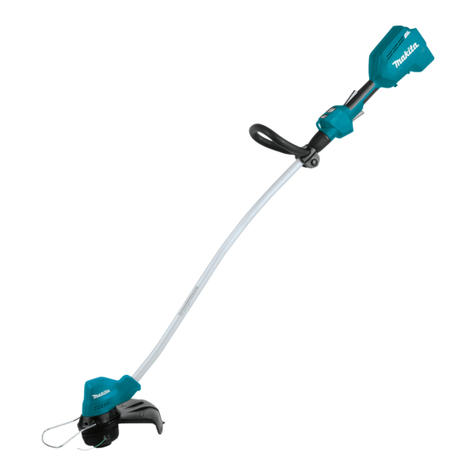
5
Starting up the hedge trimmer
- Please make sure that there are no children or other people within a working
range of 15 meters (5), also pay attention to any animal in the working vicinity.
- Before operating, always check the hedge trimmer is safe for operation.
- Check the security of the throttle lever. The throttle lever should be checked for
the smooth and easy actions. Check for proper functioning of the throttle lever
lock. Check for clean and dry handles and test the function of the I-O switch.
Keep handles free of oil and fuel.
Start the hedge trimmer only in accordance with the instructions.
Do not use any other methods for starting the engine (6)!
- Use the hedge trimmer only for applications specied.
- Start the hedge trimmer engine only after the entire assembly is done. Operation
of the hedge trimmer is permitted only after all the appropriate accessories are
attached!
- Before starting, make sure that the cutter blade will not contact any objects such
as branches, stones, etc.
- Stop the engine immediately if there are any engine problems.
- During operation, hold both the front and rear handle rmly by wrapping your
ngers around the handles. Keep handles clean and free of moisture, resin, oil or
grease.
Always ensure a safe, well-balanced footing.
- Only use outdoors.
- Always be aware of your surroundings and stay alert for possible hazards that
you may not hear due to the noise of the machine.
- Operate the hedge trimmer in such a manner as to avoid inhalation of the
exhaust gases. Never run the engine in enclosed rooms (risk of suffocation and
gas poisoning). Carbon monoxide is an odorless gas. Always ensure there is an
adequate ventilation.
- Stop the engine when resting and when leaving the hedge trimmer unattended.
Place it in a safe location to prevent danger to others or, setting re to
combustible materials or damage to the machine.
- Never put the hot hedge trimmer onto dry grass or onto any combustible
materials.
- To reduce re hazard, keep the engine and silencer free of debris, leaves, or
excessive lubricant.
- Never operate the engine with a faulty exhaust mufer.
- Stop the engine during transport (7).
- Stop the engine before:
- Cleaning a blockage;
- Checking, maintenance or working on the machine.
- Position the hedge trimmer safely during car or truck transportation to avoid a fuel
leakage.
- When transporting the hedge trimmer ensure that the fuel tank is completely
empty to avoid fuel leakage.
- When transporting or storing the machine always t the cutting device guard.
Refuelling
- Stop the engine before refuelling (7), keep well away from open ame (8) and do
not smoke.
- Do not attempt to refuel a hot or a running engine.
- Avoid skin contact with petroleum products. Do not inhale fuel vapors. Always
wear protective gloves during refuelling. Change and clean protective clothing at
regular intervals.
- Take care not to spill either fuel or oil in order to prevent soil contamination
(environmental protection). Wipe down the hedge trimmer immediately after fuel
has been spilled. Dry the cloths used for wiping the fuel at a well ventilated area
before disposing them. Failure to do so may cause spontaneous combustion.
- Avoid any fuel contact with your clothes. Change your clothes immediately if fuel
has been spilled on it (dangerous hazard).
- Inspect the fuel cap at regular intervals making sure that it stays securely fastened.
- Carefully tighten the fuel tank cap. Change locations to start the engine (at least 3
meters away from the place of refuelling) (9).
- Never refuel in closed rooms. Fuel vapors accumulate at ground level (risk of
explosions).
- Only transport and store fuels in approved containers. Make sure stored fuel is
not accessible to children.
- When mixing gasoline with two-stroke engine oil, use only gasoline which
contains no ethanol or methanol (types of alcohol).
This will help to prevent damage to fuel lines and other engine parts.
15 meters
(50 feet)
360°
(5)
(6)
(7)
• Resting
• Transporting
• Refuelling
• Maintenance
• Tool Replacement
(8)
(9)
3 meters
(10 feet)

